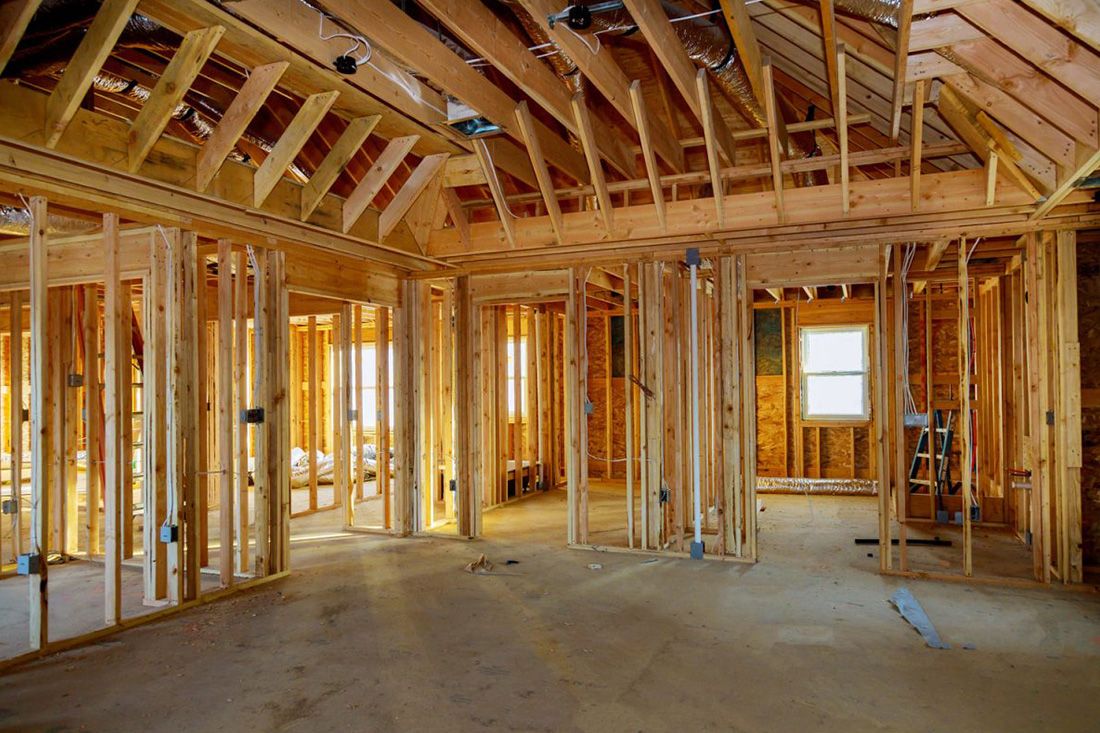You have made the decision to build your dream home instead of buying someone else’s dream home or choosing from models in a new community. Building your custom home demands your time, effort and money but the process can be fun and exciting. Prior to construction you fashion ideas and elements you envision for your “perfect” home. You’ve spent time touring the community and found the right building lot. You’re ready to start the adventure. THE FOLLOWING TIPS MAY HELP YOU AVOID MISTAKES AND STRESS DURING THE PROCESS.
- FACTORS AFFECTING DESIGN/CONSTRUCTION:
Prior to purchasing your lot, obtain soils testing to insure
that no soil conditions exist that would require extraordinary
and expensive foundation construction. If the lot is part of a community governed by a homeowner’s association, review
the restrictive covenants and architectural requirements to confirm that the home you intend to build is in compliance.
These requirements frequently regulate size, setbacks, colors, landscaping and construction materials so as to create a consistent quality and style within the community. Discuss your plans with members of the Board of Directors or Architectural Review Committee. - SELECTING THE CONTRACTOR:
Hiring an experienced and reputable general contractor with a successful track record is essential. An iron-clad construction contract will offer little protection if the contractor is dishonest, incompetent, unresponsive or in financial trouble. Terminating a non-performing contractor during construction can be disruptive, expensive and lead to delay and possibly a lawsuit. Ask the contractor for a list of clients, lenders, subcontractors, suppliers. Get their opinions. - ARCHITECT:
If the home is being designed by your architect seek advice on the selection of a general contractor. Architects work closely with general contractors and will typically know the top five. Ask your architect if he/she can render contract administration services. This involves periodic inspections to insure that construction is
in compliance with plans and specifications. The inspections can detect defects and deficiencies so that problems can be remedied during construction. The architect approves payments to the contractor and acts as your representative during the construction period. - OWNER’S REPRESENTATIVE:
If you have not directly contracted with an architect or your architect will not be providing contract administration services, engage an owner’s representative. There are professional construction managers and general contractors who can perform these services. If you are obtaining a construction loan the
lender will hire an inspector to make inspections to confirm that
a percentage of the work has been completed justifying a draw under the construction loan agreement. Inspection by the lender is not an adequate substitute for hiring your own representative to conduct inspections and approve payments. - THE CONTRACT:
Seek the advice and assistance of your architect and an experienced attorney to prepare or review the construction contract with the general contractor. Beware of home-spun forms furnished by the contractor. The American Institute of Architects (AIA) publishes various forms which have been in widespread use for many years. These forms are comprehensive and tend to be owner oriented. - COST/PLUS CONTRACT:
A cost/plus contract provides that the owner will pay the actual cost of construction plus a fee to the general contractor. When a progress payment is due, the contractor submits invoices from sub-contractors and suppliers proving actual cost and adds
the contractor’s fee. The owner is given the right to audit the contractor’s records to insure accuracy. A construction budget is typically prepared prior to commencement. However, the budget is not binding. Unless the contract has guaranteed a maximum price the owner assumes the risk that actual costs will exceed the budget. - STIPULATED SUM CONTRACT:
Under this form of contract the contractor is building your
home for a fixed price. The contractor assumes the risk that actual costs will exceed the price. However, change orders
and costs exceeding allowances can increase the price. Also, contractors typically build in a contingency as part of the price to provide cushion against the possibility of costs exceeding price. One advantage of this type of contract is that the owner does not need to review invoices and accountings or hire professionals
to audit costs. - DESIGN/BUILD CONTRACT:
Under this type of contract, the builder subcontracts architectural services as part of the total contract sum. This arrangement can save money but be aware that the architect works for the builder, not you. If you enter into this type of arrangement you should engage your own architect or owner’s representative to review plans, make periodic inspections and approve payments to
the contractor. - PROGRESS PAYMENT SCHEDULE:
The AIA form of contract provides for monthly payments to the contractor based upon percentage of completion. Some forms provide for periodic payments based upon the stage
of construction completion e.g., X% upon completion of foundation, Y% upon drywall installation, etc. Your architect or owner’s representative should review the payment schedule to insure that payments to the contractor correspond to the value of the work in place. - WARRANTIES:
The construction contract should include the terms of any express warranties offered by the contractor. A quality contractor will be willing to stand behind its work and correct defects in workmanship and materials after completion. The warranty provisions of the standard AIA contract form provide the broadest and best protections. - MINIMIZE CHANGE ORDERS:
Settle on your plans and make your selections prior to commencement of construction. Changing design and selections while construction is ongoing can be costly and may
delay completion.

